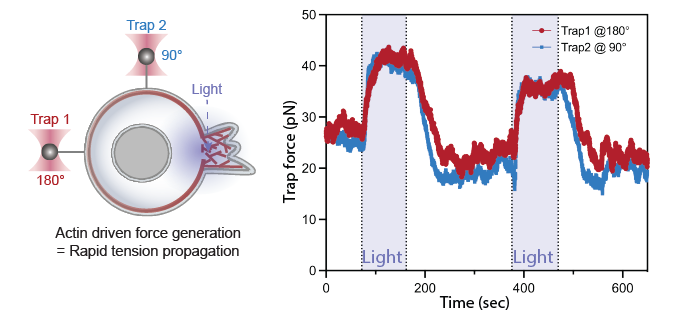Actin-driven protrusions generate rapid long-range membrane tension propagation in cells - Cell
H. de Belly, S. Yan, H. Borja da Rocha, S. Ichbiah, J.P. Town, H. Turlier*, C.J. Bustamante*, O.D. Weiner*, Cell 2023
Read more: publisher - preprint
Membrane tension is thought to be a long-range integrator of cell physiology. Membrane tension has been proposed to enable cell polarity during migration through front-back coordination and long-range protrusion competition. These roles necessitate effective tension transmission across the cell. However, conflicting observations have left the field divided as to whether cell membranes support or resist tension propagation. This discrepancy likely originates from the use of exogenous forces that may not accurately mimic endogenous forces. We overcome this complication by leveraging optogenetics to directly control localized actin-based protrusions or actomyosin contractions while simultaneously monitoring the propagation of membrane tension using dual-trap optical tweezers. Surprisingly, actin-driven protrusions and actomyosin contractions both elicit rapid global membrane tension propagation, whereas forces applied to cell membranes alone do not. We present a simple unifying mechanical model in which mechanical forces that engage the actin cortex drive rapid, robust membrane tension propagation through long-range membrane flows.
